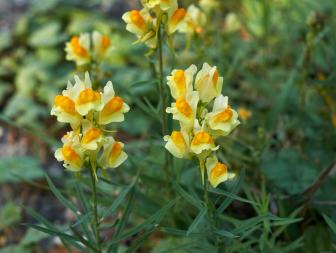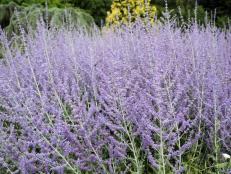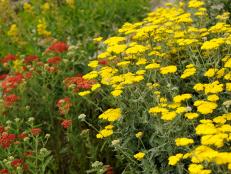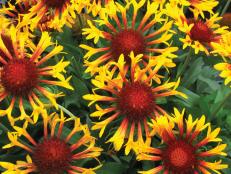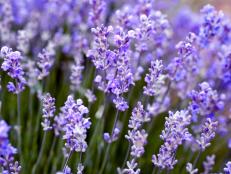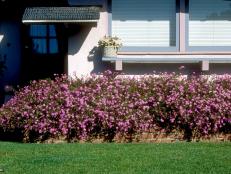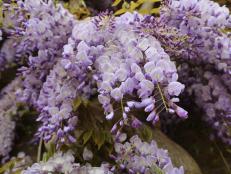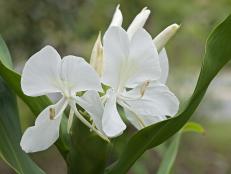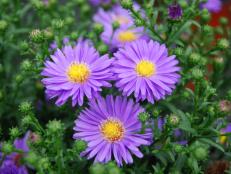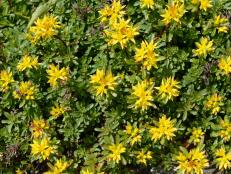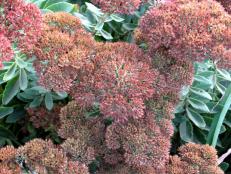How to Grow Indian Paintbrush
Learn how to plant and grow this drought-tolerant western wildflower in your garden.
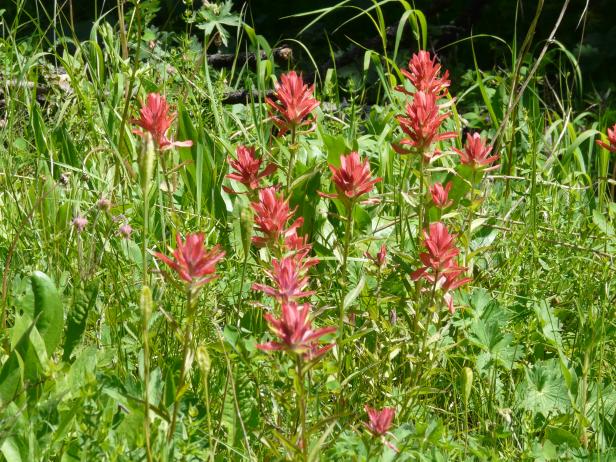
Ethan Platt/American Meadows

Indian paintbrush is a native plant that grows wild in the American West and Southwest. You can grow it in your perennial garden or use it to naturalize areas and it will color the landscape with clusters of flashy red-orange bracts (leaves) that look like paintbrushes dipped in paint.
Those bracts are not really flowers. Indian paintbrush’s actual blooms are tiny and unimpressive, but they do the very important job of making seed so the plant can reproduce.
Botanical Name: Castilleja spp.
Common Names: Indian paintbrush, desert Indian paintbrush, prairie fire, painted cup, Indian blanket
Bloom Time: Late spring, early summer
Bloom Color: Orange, red
Plant Type: Biennial
USDA Hardiness Zones: 4 to 8
Traditionally, American Indian tribes used the plant for both food and medicinal purposes. For example, the Maidu used Indian paintbrush as a diuretic and to cure bronchial problems.
20 Types of Perennial Wildflowers 20 Photos
Learn about the various types of perennial wildflowers — including Indian paintbrush — and how to successfully grow them with this gardening guide.
Indian paintbrush adds fiery splashes of color in your garden in late spring and early summer. Since it’s a native of the semi-desert and made to thrive in hot, dry conditions, it’s a good pick for a low-maintenance, eco-friendly garden. It also attracts hummingbirds and butterflies who dine on the nectar of its flowers.
Companion Planting
Get this: Indian paintbrush actually needs other plants to survive. It’s a hemiparasite that does best when its roots can tap into the roots of neighboring plants to get some of their nutrients. It won’t harm its unsuspecting neighbors — they all work together to survive. Mix it with blue gamma grass, sagebrush, blazing star, penstemon and other perennials for a colorful, sustainable garden.
Planting and Growing Indian Paintbrush
Indian paintbrush does best in sun or part sun. It needs at least four hours of direct sunlight a day, so pick a place where it can get the light it needs.

Shutterstock; Tom Reichner
Indian paintbrush is a hemiparasite that does best when its roots can tap into the roots of neighboring plants to get some of their nutrients.
Starting from seed is the best way to go. Indian paintbrush is difficult to transplant, so you need to sow it where you grow it. Sow seeds outdoors in early spring or late summer. Seeds are slow to germinate, so it will be a few months before you see seedlings.
Plant those seeds in sandy, well-drained soil. Indian paintbrush will die in heavy soil.
Keep soil moist the first year. Yes, Indian paintbrush likes it dry but until they’re established, they’ll need some hand-watering from you.
It’s difficult to establish Indian paintbrush in a garden. But once you get it established, it’s a tough plant that won’t need much help from you to survive. So, hang tough that first year.
Caring for Indian Paintbrush
Do not fertilize. This is a semi-desert plant, and it does not need your help to eat. Remember, it’s tapping into its neighbor’s food supply.
Do not water once it’s established. After a year, your Indian paintbrush will be the drought-tolerant plant you wanted it to be. Too much water will kill it.
Indian paintbrush won’t be colorful in its first year. You’ll get foliage the first season. Those colorful flower bracts will appear in spring or early summer of the plant’s second year of life.
It will die after blooming. But don’t worry, it has dropped seeds that will become the next generation of Indian paintbrush.
Plant some seeds to help your Indian paintbrush spread. Yes, those plants will reseed themselves. But if you want a garden full of Indian paintbrush, plant additional seeds each fall. You can buy more seeds, or you can collect the seedpods from your own Indian paintbrush and plant them yourself.
Pests and Diseases
Indian paintbrush is a tough native plant; it’s not prone to pests or diseases.
Recommended Varieties
There are more than 100 species of Indian paintbrush, but here are some of our favorites.
Desert Indian Paintbrush
Castilleja Augustifolia grows 1 to 2 feet tall with red-orange blooms. The flowers on this variety are especially bright, appearing to glow from within.
Northwestern Indian Paintbrush
Castilleja chromosa is a shorter variety, growing just 6 inches to a foot tall. It has true red bracts and reddish-purple stems with green leaves. They bloom in the spring in lower elevations and late summer at higher elevations.
Wyoming Paintbrush
Castilleja linariifolia is the state flower of Wyoming. It has red blooms, gray-green foliage and grows 1 to 3 feet tall.
Rosy Paintbrush
Castilleja rhexifolio is one of the shortest Indian paintbrushes, just 5 to 12 inches tall at maturity. Since it’s native to lower elevations and wetter climates, it’s one of the most water-tolerant types of Indian paintbrush.






